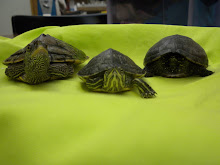 |
| by Liz Sonneborn Lerner Publishing 978-0-7613-4086-7 Review copy from publisher. |
First there is the "USA Today" heading, with the inclusion of several USA Today articles throughout. Mixing other commercial entities with children's books is rarely a good idea, in our experience, and the media in general is not high on our list of truth-tellers.
Second is the idea (not a new one) of putting all Native American tribes together in one book. That is somewhat akin to putting all European nations together - there is just so much difference between, say, the French and the Ukrainians, how do you do justice to any of them?
On the other hand, this is part of a series from Lerner, and we have seldom been disappointed with their research and quality. We weren't this time, either!
Taking our objections in reverse order, Sonneborn does a great job of making sure we don't lump all Native Americans together. The very first page of text says, "American Indians created many different cultures. In North America alone, they lived within about five hundred tribes." Whenever a specific person is mentioned, so is their tribe (or tribes). Where information about, for example, spirituality, may begin in general terms, further sections as well as sidebars and photograph captions draw out differences in specific cultures (and we loved seeing the note that sand paintings are NOT ARTWORK to purchase and use as a coaster.)
Other than the inclusion of a few articles from past issues of USA Today, we did not note any evidence of commercialization. The information we saw not only seemed accurate (and please tell us if we missed something, we are by no means experts), but it went beyond what we find in much 'juvenile' nonfiction, and we learned quite a bit! (Most exciting news: Sherman Alexie is writing a sequel! We were so stoked, we told the woman at the McDonald's drive-thru, who was somehow not as thrilled as we are.) (Yes, we read while we are waiting in drive-thrus.)
While much negative history is not mentioned (for example, the damage done by 'missionaries' in the past), the focus of this book is meant to be on American Indian cultures today. It does cover aspects many non-Natives might not think about, such as why Columbus Day or Thanksgiving might not be cause to celebrate for everyone. At the same time, it presents these conflicting feelings in a way that would hopefully inspire discussion in a classroom, without coming down heavy-handed in one way or another.
We give this one a 5 out of 5, and strongly recommend adding it to your library's collection.
For more reviews of nonfiction books for kids, check out this week's nonfiction Monday host, Rasco from RIF































